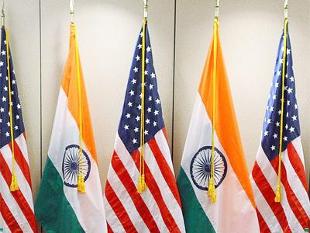FW
Exchange rate fluctuations in economies have sizeable effects on import and export volumes—a 10 per cent currency depreciation generally results in a rise in exports of an average 1.5 per cent of GDP—because cheaper currencies make exports more appealing.
There has been a rising trend toward global value chains. Manufacturers have been making more products in multiple places, with different stages in the development cycle done in different economies. This production fragmentation weighs on any gains from currency depreciation because multiple economies and their respective exchange rates are also factored in. In general, increased participation in global value chains could lower the effects of exchange movements on trade prices and of trade prices on trade volumes.
The world’s recent exchange rate movements are expected to result in redistribution of new exports across economies. Among economies experiencing currency depreciation, the rise in exports is likely to be the greatest for those with slack in the domestic economy and with financial systems operating normally.
Organic cotton will be grown in the Satpuda-Pench corridor of central India. The aim is to combine organic agriculture with environmental conservation to create a win-win situation for both farmers and nature. The multi-year project will help 6,000 farmers obtain organic certification by the end of 2018.
This is an approach that minimises the negative impacts of farming while ensuring farmer livelihoods. By helping farmers go organic, the degradation of soil and water quality can be minimised. Costs can be reduced and yields for local cotton farmers can be increased.
Cotton farmers play a critical role in the apparel industry value chain. They will be trained to build the fertility of soil to increase yields and make natural plant pesticides and compost. This, in turn, enhances their agricultural productivity in the long term.
Central India is home to some of India’s largest intact forest tracts and iconic and endangered species including tigers and gaur. It is also home to several tribal communities with diverse traditional livelihoods. In recent years, however, cotton production has become a primary source of income for nearly 1.6 million farmers in the area.
Farmers that complete the program will also be able to obtain organic certification, giving them better access to international organic cotton markets.
The International Textile Fair (ITF) returns to the Dubai World Trade Centre for its second annual edition on October 11 and 12, 2015. National award winning textile exhibitors, global fashion authorities, revered academic institutions, exclusive keynote speakers, and the world’s leading corpus on sustainable fashion will assemble under one roof during ITF, hailed as the Middle East’s premier textile fair.
ITF is also a notable platform for fashion enthusiasts, with leading fashion institutions displaying their summer 2016 collection. The fair has now taken a step further, supporting the cause of sustainable fashion. Leading keynote speakers will this time deliberate about the importance of ‘looking good without costing the Earth’ and the importance of sustainable fashion in today’s day and age. Giving an impetus to the concept of “modest fashion” will be Alia Khan, Founder and Chairwoman of the Islamic Fashion & Design Council.
Not only will IFDC be conducting their own workshops, tutorials and panel discussions at the event but they will have an entire section dedicated strictly to Modest Fashion. ITF Dubai and Islamic Fashion Design Council have confirmed the presence of labels such as Gucci, Armani, Ralph Lauren, YSL, Prada, Moschino and more.
In its pursuit of ‘Achieving Textile Versatility’, ITF serves as a crossroad where the global textile industry congregates, giving the look and feel of an organized consortium. Staying true to its aim, the fair hosts varied types of exhibitors from across the world; be it a premium silk company from Italy, a nascent kid’s garment corporation from Peru, an international textile bureau from India, or the world’s leading corpus on sustainable fashion based in London.
www.internationaltextilefair.com
Textile units want a speedy disbursal of subsidies under the Technology Upgradation Fund Scheme. They say projects started during the blackout period set for TUFS – June 29, 2010 to April 27, 2011 – too should be considered for payment of subsidies.
Entrepreneurs want removal of the hank yarn obligation, which according to them is a major deterrent for growth and economic viability of textile mills. This age-old stipulation mandates units to produce a minimum 40 per cent of the yarn as hank yarn. Due to this, there is an excess production of hank yarn as consumption of the yarn has come down because of the growth of the power loom sector. And hence the rule should be scrapped, they say.
India’s textile sector is one of the oldest industries in Indian economy. It is one of the largest contributors to India’s exports with approximately 11 per cent of total exports. The industry’s export earnings grew by 5.4 per cent in 2014/15. The future for the Indian textile industry looks promising, buoyed by both strong domestic consumption as well as export demand. The organised apparel segment is expected to grow at a compound annual growth rate of more than 13 per cent over a 10-year period.
The US has made its position clear that it doesn’t intend to return the GSP benefit to Bangladesh until the country makes substantial progress on labor safety and labor rights.
However GSP applies to a very small part of Bangladesh’s exports to the US and hence has a minimal impact on US-Bangladesh trade and investment in the short to medium term. The bigger worry for Bangladesh is if and when it becomes a middle income or developing country. If this happens, it will lose duty-free and quota-free access to a host of countries including EU, Canada, Australia and Norway, and preferential access to some other countries that it has now on account of being a less developed country (LDC). This privilege has been a major force in the country’s export growth during the last two decades.
Most of Bangladesh’s exports that enjoy duty-free and quota-free access will be hit by the same tariff wall as faced by other countries such as India and Vietnam. The price advantage that Bangladesh’s exporters enjoy against non-LDC developing countries will disappear.
Bangladesh needs to prepare itself for this eventuality. Exporters who have become accustomed to duty-free access in other countries will have to learn to compete at reduced profits. There will have to be some restructuring of the export industries in order to flourish in the new trade regime.

With the Trans-Pacific Partnership (TPP) trade agreement, of which Vietnam is a member, is expected to reach its conclusion later this year, the Southeast Asian country is emerging as the hot destination for investment. No wonder, the textile industry is seeing a lot of investments pouring in to take advantage of the ensuing opportunity.
Investors attracted to the textile sector

Out of the $5.85 billion of investment received by Vietnam during the first seven months of 2015, the textile sector represents over one billion, according to the Foreign Investment Department of the Ministry of Planning and Investment. This includes three major projects—the first is Turkish, for the production of fibre Dong Nai, a fund of $ 660 million. Second is Taiwan, which manufactures auxiliary industrial products for textiles and clothing from the Far Eastern Polytex sarl in Binh Duong, which is 274 million. And the third is Hong Kong, which is the plant fibre and colourful fabrics Luen Thai to Tay Ninh (160.8 million).
Luen Thai is the largest group of textile and clothing from Hong Kong (China). In Vietnam, this group will strengthen its investments in production as it is convinced of good prospects that it offers with regard to the future Trans-Pacific Partnership Agreement (TPP). After the reform of the Generalised System of Preferences (GSP) proposed by the US, the Hong Kong group has fully evaluated the benefits that products manufactured in Vietnam will benefit from the end of 2016.
Besides, a large number of Japanese investors are interested in the textile sector, with over 60 per cent of more than 500 Japanese companies surveyed reported having an investment plan in Vietnam. The industrial areas of the southern provinces of Long An, Binh Duong, Dong Nai and Tay Ninh, are the privileged sites chosen by Japanese companies.
Other Asian investors join the bandwagon
Apart form Japan, investors from South Korea, China, Hong Kong (China) and Taiwan (China) are flocking to the textile industry. Exports are expected to increase by 50 per cent. The signing of trade agreements has stoked the interest of many investors interest in the textile sector, which has great advantages in terms of exports to the European Union (EU), the United States, Japan and the Republic of Korea, says economists.
American and European investors are also particularly attracted to the Vietnamese textile industry. Julia K. Hughes, President of the Association of American fashion industry (USFIA) says that Vietnam is considered the country with most benefits in the TPP with low cost of its labour, its large-scale production and export capacity. It is just behind China, India, Bangladesh and Brazil.
Vietnamese textile will have no competition in terms of price with the elimination of taxes imposed on textile products from Vietnam to the US, Japan and the EU. The TPP is a proposed regional free trade agreement aimed at eliminating tariffs and lowering non-tariff barriers that is being negotiated by 12 countries throughout the Asia-Pacific region, which collectively contribute almost half of global output and over 40 per cent of world trade. The 12 countries include Australia, Brunei, Canada, Chile, Japan, Malaysia, Mexico, New Zealand, Peru, Singapore, the United States and Vietnam.
Colorjet Group, India’s largest manufacturer of digital printing machines is introducing two future-ready digital textile printing solutions, the Metro and the Fabjet-Duo at ITMA 2015.
The Metro is a truly advanced industrial grade digital textile printer, which fantastically incorporates the latest technology and efficient engineering to meet the ever growing demands of textile business. Compatible to work with all types of inks like reactive acid disperse and pigment, this printer weaves magic on a variety of fabrics. Be it any kind of fabric, ranging from 0.1mm to 30mm including cotton, polyester, silk, viscose, wool, nylon, acetate and various blended fabrics can be printed on the Metro.
At ITMA, visitors will be able to witness how the Metro has been synchronized and engineered specifically to produce the best results with pigment inks. Its unique value proposition for customers is the synchronized technology to ensure smooth firing of jetting assembly for faster and smoother productions with pigment inks.
The Fabjet-Duo has the ‘Power of Two’ in one machine. This printer has a dual ink supply system which gives one the freedom to choose between any two of the three inks; reactive, disperse and pigment and thus by just a flick of a switch, the printer becomes a reactive or pigment or disperse ink printer. It offers access to printing cotton and polyester fabrics on the same machine and also makes for a perfect solution for sampling as well as mass production. It is also ideal for printing of home textiles since the printer has a width of 3.2 metres.
“Our digital textile printers are manufactured at a state-of-the-art manufacturing facility in India and these two unique printers have been developed from collaborative and inventive R&D to ensure industry needs, like smaller footprints and high energy efficiency,” said Colorjet Group Director, Pavan Gupta, adding, “Through ITMA 2015, we are making the same technologies simultaneously available to the Indian and global textile printing industry and that too at very competitive prices, offering the least payback period.”
www.colorjetgroup.com
Bangladesh wants to reach an export target of 50 billion dollars in readymade garments by 2021. A road map is being prepared for attaining the ambitious apparel export target. The road map includes improving infrastructure, uninterrupted power and energy supply and increasing the handling capacity of Chittagong port.
Export earnings from this sector were $25 billion during the last fiscal (2014/15). The country has sought assistance from development partners in attaining this aim. Some partners have responded favourably but they are looking for an improvement in labour rights at the work places of apparel industries. This the government has agreed to. The development partners will offer training for skill development of garment workers. The skill development will include development of fashion design.
The International Labor Organisation (ILO) will be the focal point for improving labour rights and for skill development. ILO will offer multiple training programs for skill development and productivity improvement. The project will continue from November 2015 to December 2020. It has been named ‘Promoting Social Dialogue and Harmonious Industrial Relations in Bangladesh’ the ReadyMade Garment Industry. Garment industries in the export processing zones will also come under the plan. Sweden has decided to offer financial support worth $5.4 million.
www.ilo.org
Levi Strauss & Co is a powerful example of how a brand can help impact sustainability. A brand needs to invest in both social impact initiatives that generate measurable results, and engaging marketing campaigns that inspire internal and external stakeholders to participate in the process of competitive advantages through compelling storytelling.
Bringing innovations to environmental and social impact throughout its supply chain, materials and also activating its consumer base, Levi’s has established itself as a prominent leader that is taking the concept of sustainability forward in the apparel industry.
The brand is getting rid of traditionally unsustainable practices in favour of radically new solutions. From going beyond labour compliance standards by publicly disclosing its manufacturing supplier locations, to leading the industry in banning sandblasting and partnering with NGOs and key suppliers to support programmes that improve workers’ lives, the brand is doing it all.
Levi’s Water Less process has saved more than one billion liters of water in the manufacturing of its products, since it launched in 2011. Composed of a minimum 20 per cent post consumer recycled content from an average of 8 plastic bottles, as well as Dockers’ WellThread collection, Levi’s Waste Less jeans are a good example.
Levi’s recently asked consumers to wash their jeans less often, taking its water conservation commitments further. The brand, through their clothing recycling partnership with I:CO and Goodwill , as well as updated, environmentally focused care tags, ‘A Care Tag for Our Planet’ on products across Levi’s and Dockers brands has extended its sustainability messaging in stores.
Through a partnership with Project WET foundation, Levi’s provides a water conservation curriculum for students delivered through Levi’s ‘water ambassadors’—employees volunteering to deliver the curriculum.
www.levistrauss.com
The Federal Board of Revenue (FBR) has received a recommendation to introduce ‘no payment no refund’ system for exporters and to immediately withdraw increase in import duty on coal from 1 per cent to 5 per cent, as this would nullify the government's positive initiative to use coal as an alternative fuel, from the Senate Standing Committee on textile industry.
The textile sector, which is currently ranked fourth in the priority for provisions of gas must be supplied natural gas, as per the committee’s recommendations. Another point of discussion was the comparative study on regional electricity rates in competing exporting countries. NEPRA should ensure uninterrupted energy supply to the textile industry and tariff of power should be at par with the rates of electricity tariff and surcharges of competing countries in the region, according to the committee.
Moreover, the committee recommended zero rating sales tax facility, ‘no payment no refund’ system for exports to declare textile sector as zero-rated. Moreover, if sales tax is collected at retail stage, it will ensure revenue on the goods that arrive in the country and the entire local consumption, it suggested.
Besides, it said, immediate refunds of all outstanding claims of sales tax, DLTL and customs rebate, etc., should be cleared by the government at the earliest. It recommended that wherever the claim/refunds are processed and eligibility is established, the payments should be made not later than 90 days, though stated that refund claims are processed.
The government should ensure protection of interests of all stakeholders from farmers to spinners while purchasing cotton directly from the farmers, according to the committee. This is because, the looms apprehensions of farmers are exploited by monopolists and this further aggravates the situation.
www.senate.gov.pk












